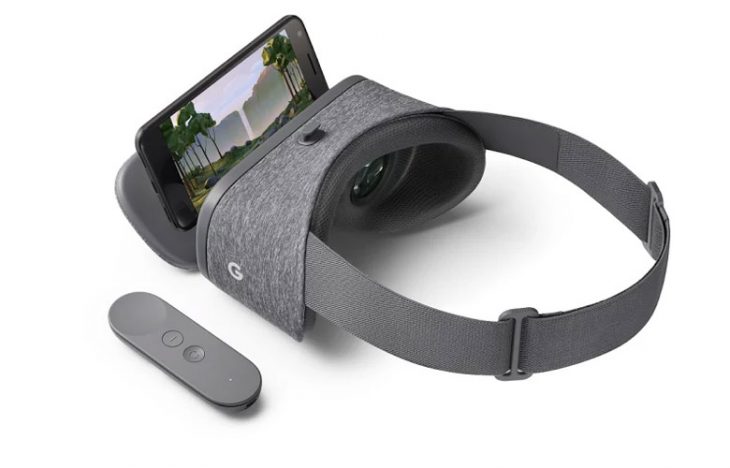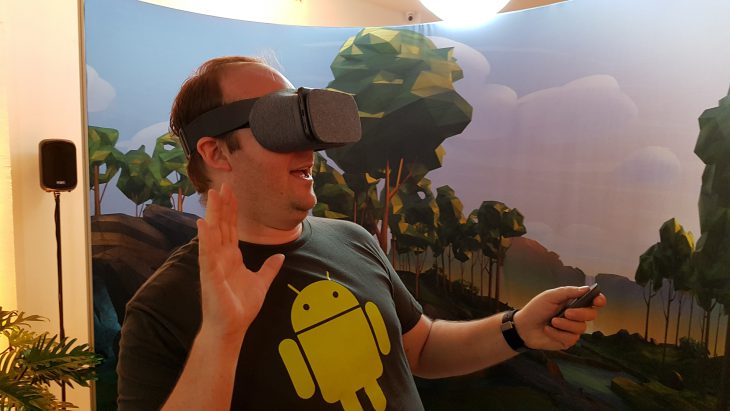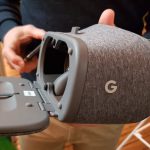
At this morning’s MadeByGoogle event in Sydney, Google offered us a chance to go eyes-on with their new Daydream VR system ahead of its retail launch in November.
As someone who’s used Cardboard a bit in his time, it’s interesting to see the clear evolution path from Cardboard to Daydream. The form factor is largely the same, but the extra budget (or rather, having a budget at all) makes for some important additions to the experience.
First and foremost, there’s the build quality of the Daydream View, the official name for Google’s VR headset. It’s now constructed from light, and comfortable materials with a pleasant textured fabric in mottled grey and foam / rubber inserts for comfort while wearing and to hold your phone in place.
Daydream also adds perhaps the most-requested and most-needed additions to the Cardboard experience – a stretchy elastic headband to hold the unit firmly in place, and a controller that fits snugly in your hand that has a home button, an action button and a capacitive swipe area that’s also a button. Handily, when not in use, you can store the controller inside the Daydream View so that you don’t* lose it (* not guaranteed, especially for me).
Google offered a couple of demonstration experiences up for us to try out this morning – a VR piece set in the London Museum that brings an amphibious dinosaur to life in front of your eyes (and his), and I was also able to take a quick look at their exclusive new VR experience for JK Rowling’s Fantastic Beasts and Where To Find Them.
Like Cardboard, you’re not meant to move around while you experience the experiences. In the dinosaur exhibit VR piece, things happen around you as the museum hall becomes flooded and the dinosaur bones on the wall become living breathing flesh and blood, and the dinosaur detaches itself from the wall, swims around and regards the viewer with some suspicion. The controller doesn’t do much in this experience as its really just designed to wow the viewer and demonstrate what Daydream can do.
In the exclusive Fantastic Beasts experience, you’ll take on the role of a wizard and the controller becomes far more useful — it’s represented on-screen as a wand you can wave about in much the same way as HTC’s Vive allows you to visualise the controllers as in-game items – an impressive feat for something that costs a fraction of the price.
One thing that become apparent in the demo area is that you’ll likely want to use your headphones for the best audio experience if you’re in a crowded space — no problem, the Pixel phones still have 3.5mm headphone jacks, Google’s event staff were more than happy to point out.
I’m not sure I’m ready to see someone whip out a Daydream View on their daily commute to work, but I feel like this is increasingly the future we’re heading for. As with Samsung’s Gear VR, I could see someone getting great use out of the device in flight or somewhere you’ll be stationary (and probably close to a power supply) for some time.
One thing hasn’t changed – no matter which VR solution is on my face, I still look a bit of a fool. Your mileage may vary 😉

Google’s Daydream View goes on sale in Australia in November for $119.








Will this be feasible for watching Netflix on? Charging and using this at the same time for long periods, I’m thinking it would get very hot.
As the Nexus 6P isn’t daydream ready, will have to wait till next year for a Daydream experience!